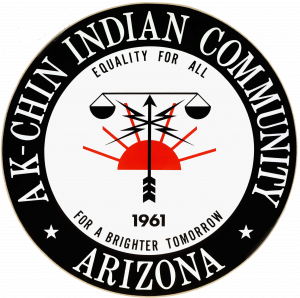
The Ak-Chin Indian Community is nestled into the Santa Cruz Valley of Southern Arizona. Located at an elevation of approximately 1,186 feet, the Community lies 58 miles south of Phoenix in the northwestern part of Pinal County. Click here to learn more
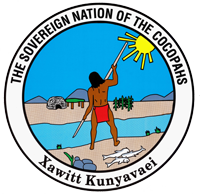
The Cocopah Indian Reservation is located in low lying desert approximately 13 miles south of Yuma and bounded by the Colorado River. Just five miles north of San Luis, it is situated 180 miles east of San Diego and 180 miles west of Phoenix. Click here to learn more
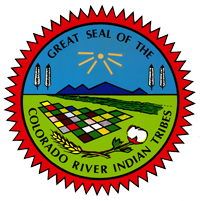
The Colorado River Indian Tribe’s (CRIT) Reservation is located in western Arizona at Parker, 189 miles from Phoenix. The Reservation spans the Colorado River and has land in Arizona (La Paz County) and California (San Bernardino). Click here to learn more
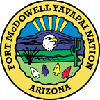
The current boundaries of the Fort McDowell reservation mark only a small portion of the ancestral territory of the bands of Yavapais whos homeland was the vast area called Arizona and the Mogollon Rim country. Click here to learn more

Spirit Mountain is the earthly origin of this tribe whose reservation spans land in Arizona and Nevada. The present boundaries, which stretch along the banks of the Colorado River, cover 23,699 acres in Arizona and 5,582 acres in Nevada. Click here to learn more
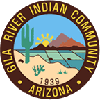
The Gila River Indian Community (GRIC) traces its roots to the Hohokam, prehistoric Indians who lived and farmed along the Gila River Basin centuries ago. Composed of two members of tribes, the Pima and Maricopas, GRIC is located in south-central Arizona. Click here to learn more

Havasuw `Baaja, the people of the blue green waters, are the traditional guardians of the Grand Canyon. Related to the Yuman, the Havasupai have from the beginning, inhabited the Grand Canyon and its environs. Click here to learn more
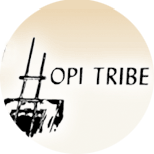
The Hopi people trace their history in Arizona to more than 2,000 years, but their history as a people goes back thousands of years. The Hopi migrated north to Arizona from the south, up from what is now South America, Central America and Mexico. Click here to learn more
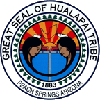
Hwal`bay means “People of the Tall Pine.” The Hualapai live on a reservation encompassing a million acres along 108 miles of the Colorado River and the Grand Canyon. The Hwal`bay call this middle river corridor “Hakataya” or “the backbone of the river”. Click here to learn more
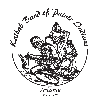
The Kaibab Band of Paiute Indians (“Tribe”) is a federally-recognized Indian Tribe organized under the Indian Reorganization Act of June 19, 1934 (codified as amended at 25 U.S.C. §§ 461, 462, 463, 464, 465, 466-470, 471, 472, 473, 474, 475, 476-478, 479). Click here to learn more
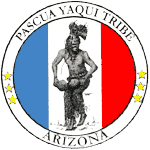
The Pascua Yaqui Indian Reservation is surrounded by a variety of scenic drives and recreational opportunities. An hour away is Mt. Lemmon with hiking, skiing and other outdoor opportunities. A few miles north of the reservation is Saguaro National Monument. Click here to learn more
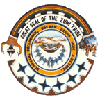
The ancient homelands of the Zunis are along the middle reaches of the Zuni River where their cultural ancestors lived for centuries. Near the settlements and villages left by the ancient people, the Zuni Indians built compact villages of multi-storied houses. Click here to learn more
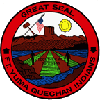
Home of the Quechan (pronounced Kwuh-tsan) Indians, Fort Yuma-Quechan Reservation is located along both sides of the Colorado River near Yuma, Arizona. The reservation borders the states of Arizona, California, Baja California and Mexico. Click here to learn more

The symbol of the Salt River Pima-Maricopa Community is the Man in Maze, a design for an Indian Community caught in the web of a burgeoning metropolitan pressures. It depicts the experiences which occur during the journey through the maze of life. Click here to learn more

The San Carlos Apache Indian Reservation roams over a landscape that ranges from alpine meadows to desert. Encompassing 1,834,781 acres, it was established by executive order on November 9, 1871. Click here to learn more

The Tohono O’odham Nation is comparable in size to the state of Connecticut. Its four non-contiguous segments total more than 2.8 million acres at an elevation of 2,674 feet. The Nation has established an Industrial Park that is located near Tucson. Click here to learn more
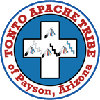
The Tonto Apache Tribe is located adjacent to the town of Payson (originally named Te-go-suk, Place of the Yellow Water), in northwestern Gila County approximately 95 miles northeast of Phoenix and 100 miles southeast of Flagstaff, Arizona. Click here to learn more

White Mountain Apache Tribe is located in the east central region of Arizona, 194 miles northeast of Phoenix. The White Mountain Apaches reside on 1.6 million acres at its ancestral homeland on the Fort Apache Indian Reservation. Click here to learn more
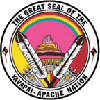
The Yavapai-Apache Nation is located in the Upper Verde Valley of central Arizona off of I-17, 90 miles north of Phoenix. The modern Nation is the amalgamation of two historically distinct Tribes both of whom occupied the Upper Verde prior to European invasion. Click here to learn more

The Yavapai-Prescott Indian Reservation consists of approximately 1,400 acres that are adjacent to the city of Prescott, Arizona. Positioned at a crossroads for commerce, this reservation is intersected by U.S. Highway 89 and State Highway 69. Click here to learn more